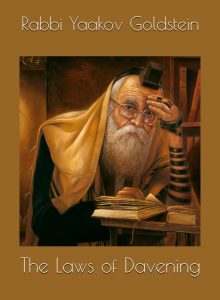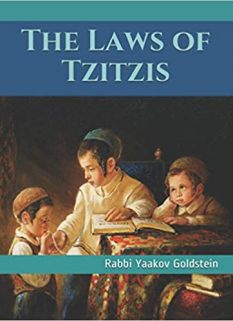
*As an Amazon Associate I earn from qualifying purchases.
Mincha Ketzara:[1]
In a time of need[2], such as if enough time does not remain for a Minyan to Daven Mincha and recite all 18 blessings of Chazaras Hashatz within Zeman Tefila[3], then the Minyan is to Daven a Mincha Ketzara.[4] [However, according to Kabala one is to never Daven a Mincha Ketzara, even if the Minyan is pressed for time.[5] This applies even if the repetition will take place after sunset.[6]]
Its order: If there is not much time left for Mincha, then both the Chazan and congregation begin the silent prayer together, with the Chazan saying his private prayer out loud until the recital of Kedusha which is recited as normal by the Chazan and congregation.[7] The congregation is to silently recite each word together with the Chazan until he reaches Kedusha.[8] After the conclusion of Kedusha the Chazan recites out loud until the end of the blessing of Hakeil Hakadosh and then recites the remainder of the prayer silently and does not perform a repetition. The congregation is to continue to recite each word of the blessing of Hakeil Hakadosh silently together with the Chazan who is saying this blessing out loud[9], and after which they are each is to pray on their own pace. After the conclusion of the silent prayer by the Chazan, Tachanun is recited as usual, and the Chazan is to recite Kaddish Tiskabel.
Not beginning together with the Chazan: Although in general the congregation is to begin their silent prayer together with the Chazan, nonetheless it is proper for at least one congregant to delay the start of his prayer until after the conclusion of Kedusha and Hakeil Hakadosh in order so he can answer Amen to the blessings of the Chazan, after which he is to begin a silent prayer.[10] If there is an individual present who already Davened Mincha, then it suffices for him to answer Amen to the blessings and all the other congregants may begin their silent prayer together with the Chazan.[11] In the event that the time of prayer is passing, and there is no time for a congregant to delay until after Hakeil Hakadosh, then all the congregants may begin their silent prayer together with the Chazan.[12] Now, in the event that there is much time left in the day, then all of the congregants are to delay the start of the silent prayer until after Kedusha and Amen of Hakeil Hakadosh.[13]
____________________________________________[1] See Admur 124:3 [see also 69:5]; Michaber and Rama 232:1; Rama 124:2; Ketzos Hashulchan 26:7; Piskeiy Teshuvos 232:2
Taanis Tzibur: See regarding doing a Mincha Ketzara on a Taanis Tzibur: M”A 232; Biur Halacha 232:1;Piskeiy Teshuvos 565:1
[2] See M”B 124:6 that this should not be done unless it is a time of need; See Piskeiy Teshuvos ibidfor definition
[3] Admur ibid; M”A 124:4; Lechem Chamudos Brachos 4:15; M”B 232:1
[4] Michaber 232:1; Shibulei Haleket in name of Rebbe Efraim, in name of Rav Haiy Gaon
[5] Arizal in Shaar Hakavanos, brought in Beir Heiytiv 232:1; Kaf Hachaim 232:9
[6] Aruch Hashulchan 232:6; Kaf Hachaim ibid; Shulchan Hatahor 232:1; Piskeiy Teshuvos 232:2
[7] Admur ibid; Rama ibid and ibid; Beir Heiytiv 124:4 in name of Radbaz; Kaf Hachaim 124:10
Other opinions: Some Poskim rule that the congregation should Daven together silently as usual, and then the Chazan should recite the first three blessings for the sake of Kedusha out loud and nothing more. [Michaber ibid; M”B 232:2]This is not the Sephardic custom.
[8] Admur ibid; Rama 124:2; M”B 232:4
[9] Rama 124:2; M”B 124:9; 232:4
[10] Admur ibid; Rama 124:2; M”B 232:4
[11] Admur ibid; Minhagei Maharil Tefila 5
[12] Admur ibid; M”A 124:5
[13] M”B 124:7; Beir Heiytiv 124:4 in name of Radbaz; Kaf Hachaim 124:10; See Piskeiy Teshuvos ibid that Sephardim even initially have everyone begin together


 Donate
Donate
Leave A Comment?
You must be logged in to post a comment.